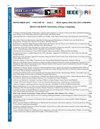Comparative Between Artificial Neural Networks and Multiple Linear Regression for the Estimation of Mechanical Properties in Cast Aluminum
IF 1.3
4区 工程技术
Q3 COMPUTER SCIENCE, INFORMATION SYSTEMS
引用次数: 0
Abstract
Metallic materials are composed of elements with defined chemical composition, and their intrinsic atomic arrangement confers them a distinctive crystalline structure. Thus, it is relevant to study of metallic materials, specifically cast aluminum alloys, whose physical and mechanical properties depend inherently on their chemical composition. Regarding the importance of mechanical properties, such as hardness, elastic modulus and ultimate tensile strength in optimizing industrial performance, it becomes essential to employ robust methods for their estimation. This study examines the computational estimation of mechanical properties from the chemical composition of various cast aluminum alloys. Two estimation modeling approaches were employed: Artificial Neural Networks (ANNs) and Multiple Linear Regression (MLR). Model performance was evaluated using three statistical metrics: Mean Absolute Error (MAE), which measures the average magnitude of errors; Root Mean Square Error (RMSE), which emphasizes larger error; and Mean Absolute Percentage Error (MAPE), which evaluates the percentage error relative to observed values. The results revealed that the ANN model exhibited superior estimation accuracy across all metrics when compared to the MLR approach. Specifically, the ANN model achieved lower values of MAE and RMSE, indicating more precise estimations and a significantly reduced MAPE, demonstrating improved reliability in estimating mechanical properties. These finding underscore the potential of ANNs as a more effective tool for estimating the mechanical performance of cast aluminum alloys based on their chemical composition. Additionally, the estimation capacity of both models was externally validated using experimental data reported in the literature, enhancing the reliability of the findings.人工神经网络与多元线性回归预测铸铝力学性能的比较
金属材料是由具有确定化学成分的元素组成的,它们固有的原子排列使它们具有独特的晶体结构。因此,它与金属材料的研究有关,特别是铸造铝合金,其物理和机械性能本质上取决于其化学成分。考虑到硬度、弹性模量和极限抗拉强度等机械性能在优化工业性能中的重要性,采用稳健的方法对其进行估计变得至关重要。本研究检验了各种铸铝合金的化学成分对力学性能的计算估计。采用了人工神经网络(ann)和多元线性回归(MLR)两种估计建模方法。使用三个统计指标来评估模型的性能:平均绝对误差(MAE),测量误差的平均大小;均方根误差(RMSE),强调较大的误差;平均绝对误差百分比(MAPE),用于评估相对于观测值的误差百分比。结果表明,与MLR方法相比,人工神经网络模型在所有指标上都表现出更高的估计精度。具体来说,ANN模型获得了更低的MAE和RMSE值,表明更精确的估计和显著降低的MAPE,表明在估计力学性能方面提高了可靠性。这些发现强调了人工神经网络作为基于化学成分估计铸铝合金力学性能的更有效工具的潜力。此外,使用文献中报道的实验数据对两种模型的估计能力进行了外部验证,增强了研究结果的可靠性。
本文章由计算机程序翻译,如有差异,请以英文原文为准。
求助全文
约1分钟内获得全文
求助全文
来源期刊

IEEE Latin America Transactions
COMPUTER SCIENCE, INFORMATION SYSTEMS-ENGINEERING, ELECTRICAL & ELECTRONIC
CiteScore
3.50
自引率
7.70%
发文量
192
审稿时长
3-8 weeks
期刊介绍:
IEEE Latin America Transactions (IEEE LATAM) is an interdisciplinary journal focused on the dissemination of original and quality research papers / review articles in Spanish and Portuguese of emerging topics in three main areas: Computing, Electric Energy and Electronics. Some of the sub-areas of the journal are, but not limited to: Automatic control, communications, instrumentation, artificial intelligence, power and industrial electronics, fault diagnosis and detection, transportation electrification, internet of things, electrical machines, circuits and systems, biomedicine and biomedical / haptic applications, secure communications, robotics, sensors and actuators, computer networks, smart grids, among others.
 求助内容:
求助内容: 应助结果提醒方式:
应助结果提醒方式:


